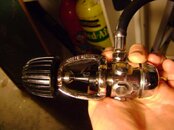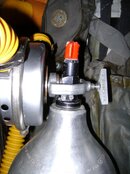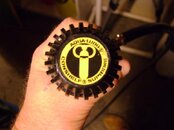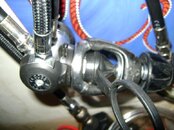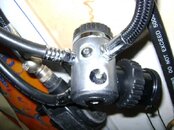Bob DBF
Contributor
The yoke's design takes it up to 200 bar (3000 PSI). The DIN (Deutsche Industrie Norm) is designed to accept up to 300 bar (4500 PSI). There are a lot of tanks that have a service rating of 3500 PSI which in fact exceeds the yoke's design. Lots of people exceed the design with only a lot of prematurely failed o-rings to show for it. Me? I don't like to exceed design specs, so I dive a DIN.
I have a yoke reg designed for 4000# service made in the early '70's, may be more than one urban legend on the board.
Bob
------------------------------------
I may be old, but I’m not dead yet.



